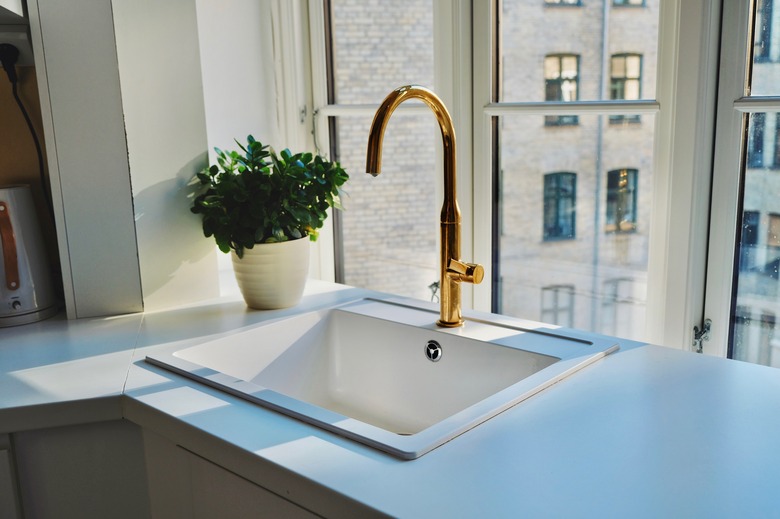Do I Need A P-Trap On My Garbage Disposal Drain?
The plumbing code has a lot of regulations, but none is as important as this one: Every drain must have a P-trap. Shower and tub drains have to have them, toilets have built-in traps and sink drains must have them, even those with garbage disposals.
Under a double sink, it might look like the garbage disposal isn't connected to a P-trap, but if you follow the pipe, you'll see that it leads to a P-trap, even though the trap may be on the other side of the cabinet. It has to be there. Those are the rules.
What's the Purpose of the P-Trap?
What's the Purpose of the P-Trap?
When explaining the purpose of the P-trap, many plumbers take the whimsical approach of Ace Plumbing and claim that it's there to catch debris. While that may be a reason for the trap, it isn't the main one. The inverted P-shaped pipe holds a pool of water that seals sewer gases, which are unsanitary and flammable, in the pipes and prevents them from wafting into the building.
In fact, the invention of the P-trap was a revolution in plumbing, especially after plumbers learned to vent it and prevent it from emptying due to siphonage when water flows in the drain. Without the P-trap, it's safe to say that the modern kitchen and bathroom wouldn't exist because they'd be unsanitary. People might still be resorting to washbasins and outhouses.
How to Connect the P-Trap to the Garbage Disposal
How to Connect the P-Trap to the Garbage Disposal
The drain outlet on a garbage disposal is usually mounted on the side, and when you install the garbage disposal by hooking it onto the bracket connected to the sink, this outlet must face in the direction of the drain. From here, there are two ways to connect the trap:
- In a cabinet with a single sink, you usually install an elbow that bends down to connect directly to the mouth of the trap.
- In a cabinet with two or three sinks, a single trap can service all of them. In this scenario, a horizontal pipe runs from the garbage disposal to a tee to which the other sink drains are also connected, and a pipe runs from the tee to the trap.
The P-Trap Can Get Clogged
The P-Trap Can Get Clogged
The P-trap definitely does catch debris but hardly ever permanently because as water keeps flowing, most soluble items dissolve and wash away. The insoluble ones, however, such as greasy foods, bones and fibrous vegetables, which are things garbage disposals hate, can accumulate and cause a clog. Mr. Rooter assures you that cleaning the trap is an easy task.
When water backs out of the garbage disposal drain and you can't clear it by running the disposal, you can usually disconnect the P-trap without tools. Put a bucket underneath it to catch water and unscrew the compression nuts at the mouth of the trap and at the outlet. Turn the trap over to empty it, then take it outside and clean it with a garden hose.
When you reinstall the trap and tighten the nuts by hand, be sure to check for leaks by letting water run through the drain. Tighten any connections that leak a little more, and use adjustable joint pliers only if necessary.
